Functional Rehabilitation of the Elbow, the Wrist and the Hand
Learn something now! - Watch the Online CEU Course Trailer
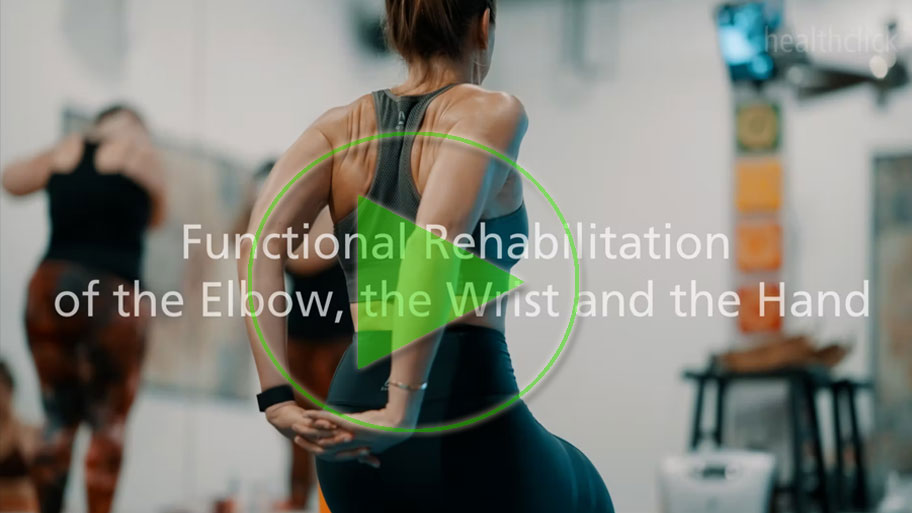
All Access Online CEU for PT, PTA and OT for $189
BEST VALUE - Includes this course and all our online courses
Subscribe Todaytheaters Purchase Now, Instant Online Course Access
Functional Rehabilitation of the Elbow, the Wrist and the Hand
$175.00
- CE Hours: 8.5 hrs, .85 CEU
- Delivered: Online
- Instant Online Access, PDF Manual for Download, 365 days of access, Mobile Ready
- No auto-renewal for this option
All Access Online CEU for PT, PTA and OT
$189
All Access Online CEU for PT, PTA and OT Subscription
1 Year Access with Annual Renewal
State specific course completion certificates.
Chat support
Prices are in US dollars- 12 months of access to all online ceu courses, course tests and state approval certificates.
- Meet all your CE requirements. Pre-approved for PT, PTAs in AK, AL, AZ, CA, CO, CT, DC, DE, GA, HI, IA, ID, IL, IN, KS, MA, ME, MI, MO, MS, MT, NC, ND, NE, NH, NM, NV, NY, OR, PA, RI, SC, SD, TN, TX, UT, VA, VT, WA, WI, and WY.
- AOTA approved.
- Designed for Physical Therapists, Occupational Therapists, Athletic Trainers and Assistants.
- Access to future courses and content.
- Start, stop and resume, right where you left off in a course.
- Real patient interviews.
- Medical expert contributors.
- 3D anatomy and medical illustrations.
- Easy to use learning system for fast access to your courses.
- Award winning content.
- Top instructors teaching evidence based skills and techniques.
Why should a physical therapist, occupational therapist or athletic trainer take this elbow, wrist and hand continuing education course?
A clinician should take this course to improve their ability to deliver better care to their patient affected by the elbow, wrist, and hand injuries or diseases. The ultimate goal for rehabilitation is to provide the optimal healing environment while promoting the performance of ADLs, meaningful activities within the community, home, and rehab setting.
When looking at structures of the hand, an understanding of biomechanics is critical to obtaining excellent outcomes. Better functional results are achieved by using essential analytical skills and having a working knowledge of biomechanics and tissue healing properties.
Rehab clinical tools instructed in this elbow, wrist and hand CE course to enhance your functional outcomes.
- Engage with in-depth information that correlates anatomy, biomechanics, and function. Learn to apply this information to specific injuries, post-surgical diagnoses, and common arthritic ailments in order to promote optimal healing and progression.
- Engage with in-depth information that correlates anatomy, biomechanics, and function. To promote optimal healing and progression, learn to apply this information to specific injuries, post-surgical diagnoses, and common arthritic ailments.
- Demonstrations of each evaluation and treatment techniques to provide an easy learning environment to practice
- Splinting techniques demonstrated include a step-by-step process to making a personalized splint, timelines for wear, and clinical pearls. Splints included for: Mallet finger; central slip injury thumb; trigger finger; CMC arthritis; de Quervain’s tenosynovitis; carpal tunnel; wrist sprains; ligamentous repair; post-op protective splints; flexor tendon injury-splints for specific zones of involvement; extensor tendon; injury-splints for particular zones of involvement; Swan neck deformity; and Boutonniere deformity.
Specific instruction will enhance your understanding and ability to deliver better patient care.
- A functional overview of the anatomical and joint structure of the elbow, wrist, and hand provides the foundation for understanding practical evaluation and treatment techniques. Common injuries can be easily identified with skilled evaluation skills when the clinician has a strong anatomical and biomechanical foundation.
- Discussion on soft tissue injuries, flexor and extensor tendon repair and rehabilitation, edema management, scar remodeling, the stiff hand, fractures, and splinting concepts
- Surgical considerations and techniques are presented to assist the clinician in developing a thorough treatment program.
- Specific evaluation, treatment, and clinical pearls will focus on:
- Lateral epicondylitis
- Phalangeal fractures
- Ligamentous injuries of the wrist
- Scaphoid ligament, lunotriquetral ligament; TFCC involvement; common fractures: scaphoid; Mallet finger; ulnar collateral ligament injury; central slip Injury; scaphoid fracture; distal radius fracture; carpal tunnel syndrome; olecranon fracture; trigger finger; basilar joint arthritis; de Quervain’s tenosynovitis; lateral epicondylitis; cubital tunnel
- Ulnar nerve compression; median nerve compression; flexor tendon injuries- Zones of Involvement and extensor tendon injuries- Zones of Involvement.
Professional Accreditation
This is an intermediate-level course applicable for PT, PTA, OT, AT. Physical Therapy Accreditation: For specific states, information uses the accreditation verification menu and select your state of license. North American Seminars, inc. an AOTA Approved Provider of professional development. PD activity approval ID 4487. This online course is offered at the CEU listed in the pulldown menu below after selection of your state. These CEUs are intermediate level, Occupational Therapy Service Delivery, evaluation and intervention, and Foundation Knowledge: human body, development, and behavior. The assignment of AOTA CEUs does not imply endorsement of specific course content, products, or clinical procedures by AOTA. Athletic Trainers: BOC provider P2047, category A. This course has not been submitted for Evidence-Based BOC approval.
fact_check Accreditation Verification
Online CEU Course for PT, PTA, OT State Accreditation
Highlights of this Hand Examination and Treatment Course

Upon Successful Completion of this course, the participant will be able to:
- Discuss the functional anatomy and biomechanics of the elbow, wrist, and hand.
- Describe the correlation between the elbow, wrist, and hand's functional anatomy and current surgical procedures to develop comprehensive therapeutic rehabilitation programs.
- Discuss the surgical interventions utilized with wrist, carpal bone, and phalanx fractures and the protocols for post-surgical healing.
- Identify the specific healing stages of tissue recovery and the impact of particular stresses on the remodeling phase.
- Identify the four types of nerve injuries, differentiate the clinical presentation, and adequately evaluate the extent of nerve damage. Describe assessment and treatment strategies of the elbow, wrist, and hand to include soft tissue injuries, fractures, flexor, and extensor tendon injuries, nerve compression, and common arthritic problems.
- Differentiate common injuries; trigger finger, ligamentous injuries of the digits, terminal tendon injury, central slip injury, ulnar collateral, and radial collateral ligament of the mp joint, zone V extensor injury, scapholunate ligament injury, lunate triquetral ligament.
- Identify the zones for common injuries of the hand.
- Describe and perform the proper monofilament testing procedures to identify specific sensation deficits.
- Discuss assessment and treatment options for phalangeal fractures, Boxer’s fracture, olecranon fracture injuries in the wrist, scapholunate ligament tear, TFCC, Scaphoid fracture, Mallet finger, central slip injury, and ulnar collateral ligament.
- Describe the manual therapy approach to mobilizing the radiocarpal joint, ligamentous tissue tears-lunotriquetral, scapholunate, and TFC.
- Identify appropriate treatment progression for distal radius fractures-intrinsic and extrinsic tightness: radial head fracture and an olecranon fracture.
- Describe the diagnosis, physiological implications, and treatment for Trigger Finger and De Quervain’s tenosynovitis.
- Identify the appropriate modality and implementation of such throughout the healing process to decrease pain and edema and improve function.
- Describe TFCC function, injury and repair and recovery periods, and the gradual treatment utilized for tissue healing.
- Identify common flexor tendon injuries, zones of injury, and appropriate treatment.
- Identify the specific assessment and treatment techniques utilized throughout the different phases of rehab to promote healing and function.
- Discuss the options for conservative management utilized for common upper extremity injuries and dysfunction.
- Describe the benefits of static versus dynamic splinting and specific materials that enhance healing and function.
- Describe the extensor and flexor tendon injury splinting protocols.
- Identify the appropriate personalized splint, timelines for wear, and clinical pearls, for the following diagnosis: Mallet finger; central slip injury; thumb; trigger finger; CMC arthritis; de Quervain’s tenosynovitis; carpal tunnel; wrist sprains; ligamentous repair; post-op protective splints; flexor tendon injury-splints for specific zones of involvement; extensor tendon; injury-splints for particular zones of involvement; Swan neck deformity; and Boutonniere deformity.
- Design a patient-centered evidence-based treatment plan applying theory and clinical relevance into practice.
Learn From the Expert - Edward Fiore, OTR/L, CHT, M.Ed,

Edward Fiore, OTR/L, CHT, M.Ed, is a Certified Hand Therapist with over 30 years of experience in all areas of rehabilitation, with specialization in orthopedic management. Treatment specialization includes overuse syndromes, nerve compression, splint fabrication, tendon repairs, and fractures of the upper extremity. The instructor also has specialized training with ergonomic job-site analysis. Mr. Fiore currently works for a private corporation and resides outside Charlotte, NC. He holds a Master’s Degree in Education, with a specialization in education technology. Mr. Fiore has lectured on the management of common hand injuries, nerve compression, and overuse syndromes. For over 20 years, he has instructed therapists on upper extremity evaluation and treatment. Mr. Fiore has had the distinct privilege of presenting at the Joint Session for the American Society of Hand Therapists and the American Society for Surgery of the Hand. He has also presented to the Florida Hand Society at several annual meetings.
Functional Rehab of the Elbow, The Wrist and The Hand Course Overview
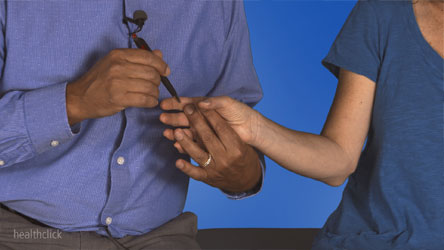
- Introduction to techniques discussed in the course.
- Evaluation and treatment approach from a functional outcomes perspective.
- Aspects of hand function, protection, hand function.
- Functional components of the hand, understanding biomechanics
- Designing a home exercise program.
Anatomy, Function, and Mechanism of Injury
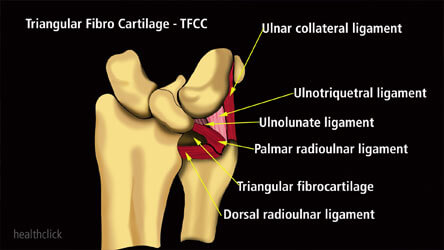
- Anatomy muscles and function.
- The median nerve, ulnar nerve, radial nerve intrinsic muscles, forearm musculature
- Joint and tendons of the forearm wrist and hand.
- Carpal bones, common injuries, trigger finger, ligamentous injuries of the digits, central slip injury radial collateral ligament
- Carpal tunnel anatomy and dysfunction signs and symptoms, what is nerve compression?
- TFCC anatomical identification, information, mechanism of injury.
- DIP, PIP, distal radioulnar joints.
- Grasp function.
- Common injuries, terminal tendon injury central slip injury, ulnar collateral and radial collateral ligament of the mp joint, zone V extensor injury, scapholunate ligament injury, lunate triquetral ligament.
Assessment of the Elbow, Wrist and The Hand

- Lateral epicondylitis, ulnar collateral ligament.
- Phases of the assessment.
- Sensory testing and description of muscle testing.
- Sensory nerve function testing.
Fractures and Ligamentous Injuries

- Phalangeal fractures, Boxer’s fracture, olecranon fracture
- Injuries in the wrist, scapholunate ligament tear, TFCC
- Scaphoid fracture
- Mallet finger, central slip injury, ulnar collateral ligament, treatment
Management of Injuries
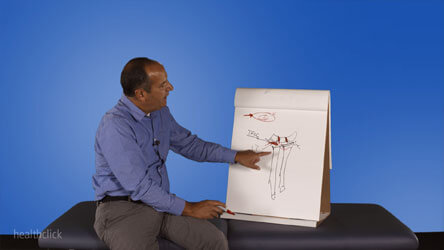
- Mobilizing the radiocarpal joint, ligamentous tissue tears-lunotriquetral, scapholunate, TFC
- Distal radius fractures-intrinsic and extrinsic tightness. Radial head fracture, olecranon fracture
- What happens when the patient does not progress?
- Trigger finger diagnosis, physiological implications, and treatment
- De Quervain’s tenosynovitis
- Lateral epicondylitis, Cubital tunnel
- General precautions, Soft tissue healing
Modalities

- Electrical stimulation and ultrasound.
- When do you implement modalities?
- Implementation modalities: underwater ultrasound
Nerve Compression and Flexor-Extensor Injuries
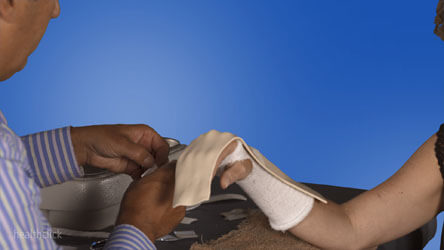
- Types of Nerve Injuries and healing time.
- Median, ulnar, and radial nerve compression injuries.
- TFCC - Function. injury, repair, and recovery periods.
- Gradual treatment for tissue healing.
- Flexor tendon injuries-Identifying the zones of injury.
- Typical injuries in each zone, treatment.
Splinting Demonstrations

- Thermoplastic brace restrictions.
- Extensor tendon injuries, zones of injuries, treatment, splinting discussion.
- Splint for Mallet finger.
- Splint for central slip injury.
- Splint for trigger thumb.
- Splint for CMC arthritis of the thumb.
- Thumb spica splint
- Splint for wrist control
- Splinting for flexor tendon injuries.
- Rehab discussion, splinting tips, static vs. dynamic
- Splinting for extensor tendon injury and protocol review
- Boutonniere and Swan neck
- Casting uses and benefits
Edema Management
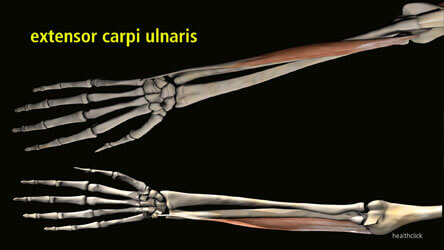
- Edema Overview
Course Test - Evaluate your knowledge

- Use the Healthclick proprietary online education system which provides the online student with:
- Worldwide access to high definition video, anatomical animations and images, and written information
- The highest quality film in the industry, you can see the difference!
- Stop and resume within a course, the Healthclick system will optimize your course based on your device, connection and remembers where you left off.
- Real-time course updates. We are always adding to each courses, updating content, adding animations, these are not static courses!
- Evaluate your knowledge with the course test on any device.
- Print your state course certificate for CE credit.
- Take the online test as many times as need in order to achieve a 70 % or greater score.
Responsible CME® - Online CEU Course Testimonials
67.225.255.111Great and thorough course -- Taylor, OTA